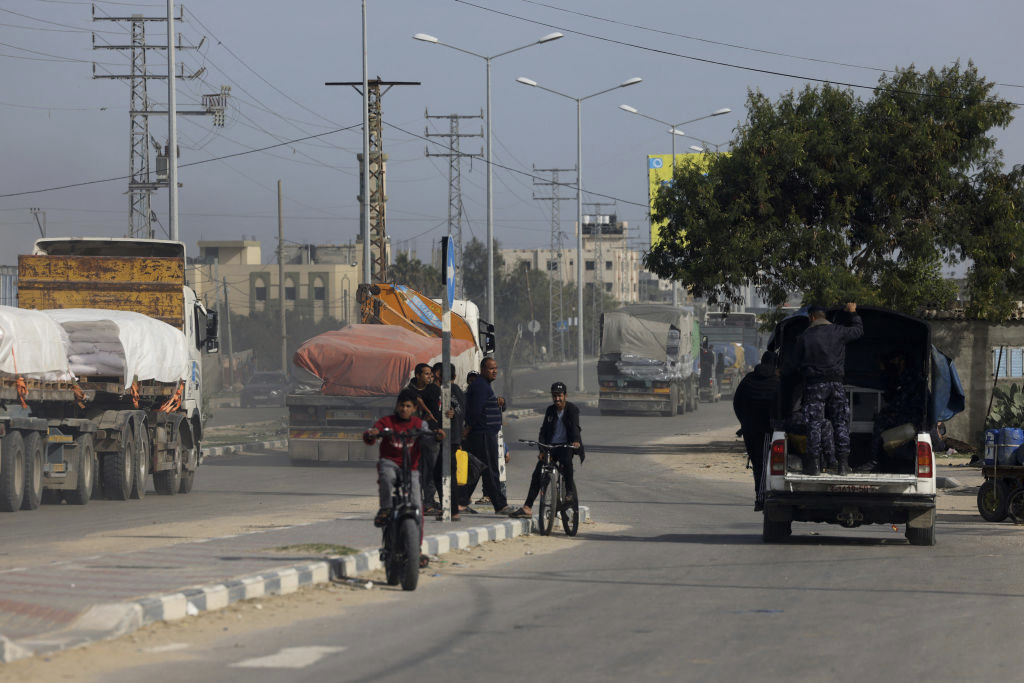In August 2024, the IDF decided that it should explore a special forces combined ground and air operation to destroy the facility, which ended up occurring on September 8.
By YONAH JEREMY BOB JANUARY 2, 2025 17:59 Operation Heavy Roads, involving IDF special op. against Iranian missile production facility in Syria
(photo credit: IDF)
Operation Heavy Roads, involving IDF special op. against Iranian missile production facility in Syria
(photo credit: IDF)
Much has already been written about the IDF Shaldag special operation on September 8 against a uniquely threatening underground Iranian missile production facility near the city of Maysaf in Syria, but only on Thursday did the IDF disclose the full timeline behind the scenes leading to and during the operation, as well as some of the doubts and challenges which had to be overcome to actually make it happen.
According to the IDF, Iran started to consider the concept for building such a missile production facility in Syria and at Maysaf in September 2017 - all of which was part of Islamic Revolutionary Guard Corps Quds Force Chief Qassem Soleimani's Islamic Crescent and "ring of fire" for surrounding Israel.
The concept was to build an underground space which the Israeli air force would not be able to attack and which would eventually make both Hezbollah in Lebanon and Iranian Shiite forces in Syria self-sufficient in being able to mass produce advanced and long range missiles with which to attack Israel.
Timeline
By the end of 2017, Iran had started digging at the site in question in order to establish such an underground space.
By 2018, Israel knew about the plan.
By 2021, Iran both completed the digging of the facility and started to send a variety of mechanical materials, gas, and other items to the facility to start moving it toward functionality.
By sometime in late 2022, top levels of the IDF were already discussing the threat of the facility, but for various reasons, it was believed there was more time to act or that it was preferable to try to destroy the facility from the air.
In recent years, there were a number of attempts to destroy the facility from the air which did not succeed, both because it is underground, and also because it is partially protected by a nearby mountain.
In August 2024, the IDF decided that due to various developments it should explore a special forces combined ground and air operation to destroy the facility, which ended up occurring on September 8.
The IDF said that many top officials were initially not convinced that such an operation would be possible.
Stay updated with the latest news!
Subscribe to The Jerusalem Post Newsletter
IDF sources told the Jerusalem Post that a mix of collecting both higher quality and quantity of intelligence than expected was part of what shifted their perspective to the idea of the operation being possible, in addition to a push by some more junior officers who knew the details of the facility at a high level.
One specific challenge that the IDF had to overcome was creating a realistic plan that would allow a large number of forces, 120 soldiers participated with large numbers of supporting aircraft, to enter and exit Syria safely - given that the safety of soldiers is always a top priority.
Only after this challenge was overcome from an intelligence perspective were higher level officers prepared to view the operation as a realistic option and were they able to invest more significant resources into playing out all of the scenarios and specific challenges which would need to be overcome.

 By The Jerusalem Post (World News) | Created at 2025-01-02 16:05:08 | Updated at 2025-01-05 00:06:16
2 days ago
By The Jerusalem Post (World News) | Created at 2025-01-02 16:05:08 | Updated at 2025-01-05 00:06:16
2 days ago








